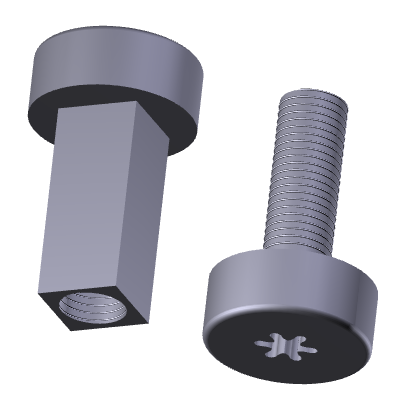The old zipper pulls were basically just a thin strip of leather that you could knot onto the end of your zipper. The one I was asked to design would be a loop-through style, leaving only one "tail" to pull instead of the two that were left from the other style.
First I drew up several different loop options on Illustrator:
Then I showed these six designs to Victor and he left his comments:
Unfortunately the photo got a little cut off but hopefully you can see that he liked the oval shape, the rounded square shape and the shape with a semicircular top, although he wanted to make the bottom curves a little more subtle. He also wanted to add an option that was a triangular shape with rounded corners.
So I fixed what I needed to and drew up a new one with the triangular design and then put those four onto a spec sheet to plan out the dimensions. This part was actually more fun than one might thing making a spec sheet should be because I had to use a caliper to measure the thickness of the leather in order to get the dimension of the opening in the center and then scale everything from there.
I was struggling to get everything proportional at first so Victor taught me a fun little trick, which is using paper. He said that if you use real materials like paper and scissors to get a preliminary feel for what you're doing you can make real adjustments and then measure from that. So I cut out the shape I wanted in paper and then cut it down to the size I needed before taking the measurements. Here's a look at the spec sheet (notice my name next to the 'designed by' section!!):
After all the proportions looked good we sent this off to the manufacturers and a week or so later... voilà!
These are the first raw samples that came into the office. I say raw because they'll probably finish them off with edge painting or something to make them look more polished. Here are a few close ups:
It was a real accomplishment for me to have thought up, designed, and had manufactured my own product that's going to be sold to actual people. While I've made plenty of things, I will always consider this to be my real "first". Here's to many more to come!





































